集成非线性光子学
Integrated Nonlinear Photonics Lab
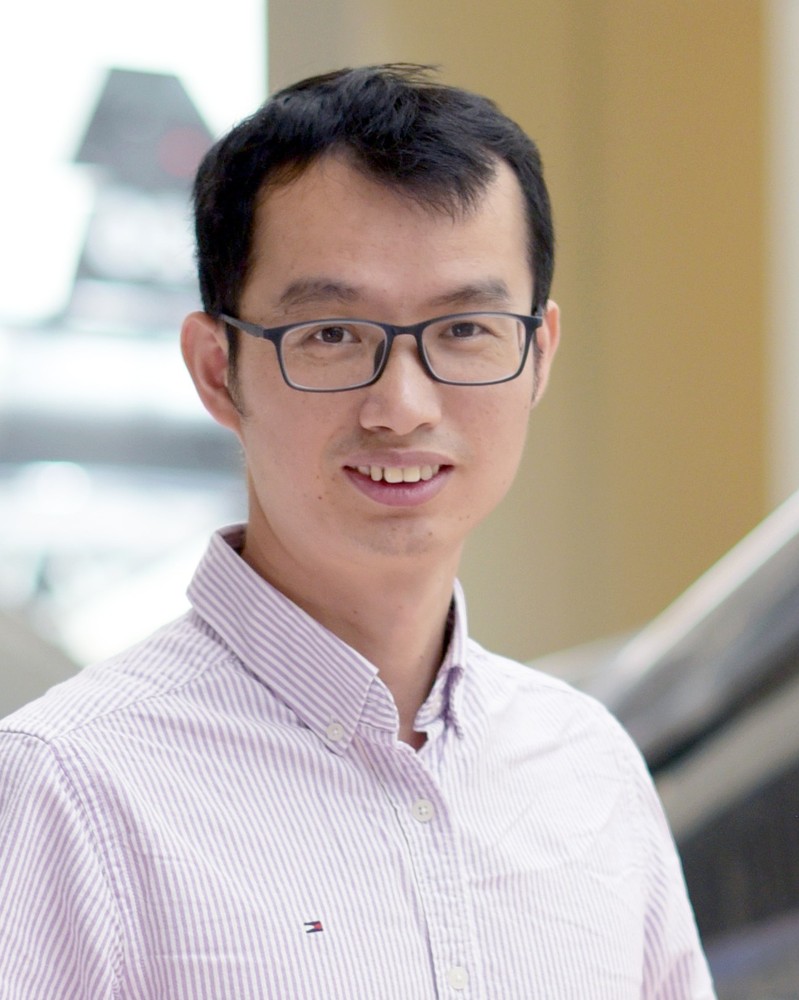
沈晓钦 Xiaoqin Shen
研究员/博导,助理教授 | Tenure-Track Assistant Professor
地址 Office: 物院6-514E | SPST 6-514E
Email: shenxq@@shanghaitech.edu.cn
教育工作经历 Experiences:
2019.1–to date 助理教授 研究员,上海科技大学 | Assistant Professor/PI, ShanghaiTech University
2013-2018 博士后,加州大学圣巴巴拉分校 & 南加州大学 | Postdoc (Applied Physics/Electrical Enginering), UCSB & USC
2013 博士, 新加坡国立大学 | PhD in Chemistry (Medicinal Chemistry/Laser Spectroscopy), National University of Singapore
2008 硕士, 中国科学技术大学 | MSc in Polymer Chemistry/Physics, University of Science and Technology of China
2005 学士, 海南大学 | BE in Polymer Materials/Engineering, Hainan University
Quote1: 'Impact is always behind the quality' 品质为基,影响自远
Quote2: '科研成果的终极目标是产业应用'
The Bigger Picture
The global photonic integrated circuit (PIC) market is projected to reach above USD 50 billion by 2035, driven by three key factors:
Bandwidth demand: Rising requirements for high-speed data transmission in telecommunications and hyperscale data centers.
Emerging technologies: Integration with optical computing, quantum information processing, and generative AI hardware, etc.
Manufacturing advances: Adoption of CMOS-compatible fabrication and heterogeneous integration techniques, enabling cost-effective mass production.
A PIC is a microscale system in which photonic components—such as waveguides, modulators, and detectors—are monolithically fabricated on semiconductor substrates (e.g., silicon, indium phosphide) to form fully integrated optical systems. Unlike electronic circuits that rely on electrons, PICs utilize photons as information carriers through mechanisms including coherent light emission, optical modulation, and guided-wave propagation. These chips achieve precise light-matter interactions via engineered resonant structures (e.g., microring resonators) and dispersion-tailored waveguides.
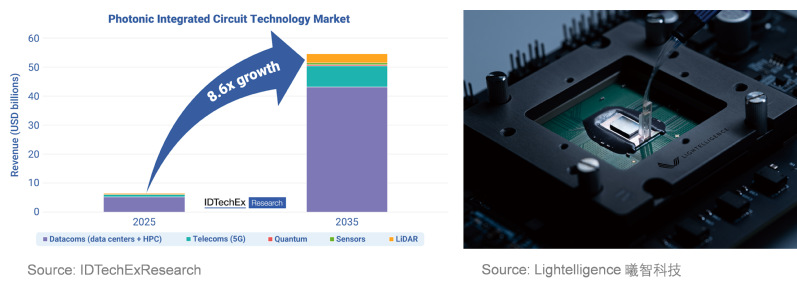
Recent breakthroughs in integrated nonlinear photonics—a discipline combining nonlinear optics, nanophotonics, and material science—have further expanded PIC capabilities. By leveraging high-index-contrast waveguides (e.g., silica, silicon, silicon nitride, lithium niobate) to confine light at subwavelength scales, integrated nonliear photonics provides transformative capabilities for controlling, enhancing and manipulating material nonlinearities within monolithic PIC platforms. This platform faciliates nonlinear optical phenomena in both classic and quantum regime. Such engineered light-matter interactinos underpin disruptive technologies for critical applications:
Optical computing: Programmable photonic circuits for analog optical matrix multiplication and neuromorphic computing, enabling ultrafast, energy-efficient AI accelerators.
Frequency metrology: Chip-scale Kerr frequency combs for optical clocks and spectroscopy.
Quantum technologies: Distributed quantum sensing and quantum entanglement generation.
Biophotonics: Label-free biosensors with single-molecule sensitivity.
Research Overview
To unlock their full potential in integrated nonlinear photonics for expanding PIC capabilities, a multifaceted approach spanning materials, device design, integrated strategies, and system-level optimization is essential. Our research group focuses on two key areas:
1) Improving efficiencies of integrated nonlinear optical effects across the entire optical spectrum.
2) Discovering new materials and nanotechnologies that enable precise control of nonlinear signals in integrated platforms.
Specifically, we are dedicated to engineering interactions between tailored molecular materials and subwavelength-confined photonic modes (enabled by microresonators or microcrystalline structures), with the aim to amplify and manipulate nonlinear optical processes such as nonlinear parametric and quantum frequency conversions and to realize commecializable high speed/bandwidth electro-optic modulations. With these goals, our research is broadly classified into three sub-areas.
1. Integrated microcavity nonlinear photonics
As one of the fundamental components in integrated nonlinear photonics, optical microcavities confine light into extremely small mode volumes and resonate at specific optical frequencies or wavelengths, enabling the buildup of intense optical fields. Among various types of optical microcavities, whispering-gallery-mode (WGM) microcavities are particularly notable for their ultrahigh quality (Q) factors. These microcavities have emerged as transformative nonlinear photonic components with significant potential in applications such as ultraprecise frequency metrology, high-speed optical communications, quantum information processing, and spectroscopy.
In this research subfield, we are particularly dedicated to developing a novel integrated microcavity platform termed high-Q organic-hybrid microcavities (OHMs). This platform combines the strong nonlinearities and versatile functionalities of oganic molecules with the ultrahigh Q characteristics of WGM microcavities. By harnessing this synergistic effect, we strive to achieve precise nonlinear signal control and boost nonlinear optical conversion efficiencies in microcavity-based devices, and to develop OHMs as nonlinear/quantum frequency convertors and signal modulators for advanced PIC applications.
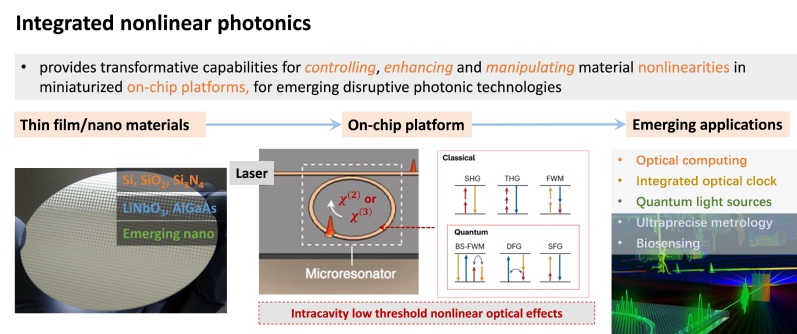
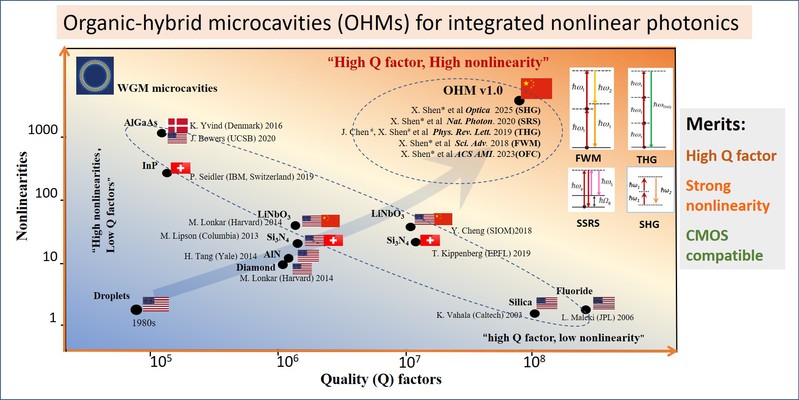
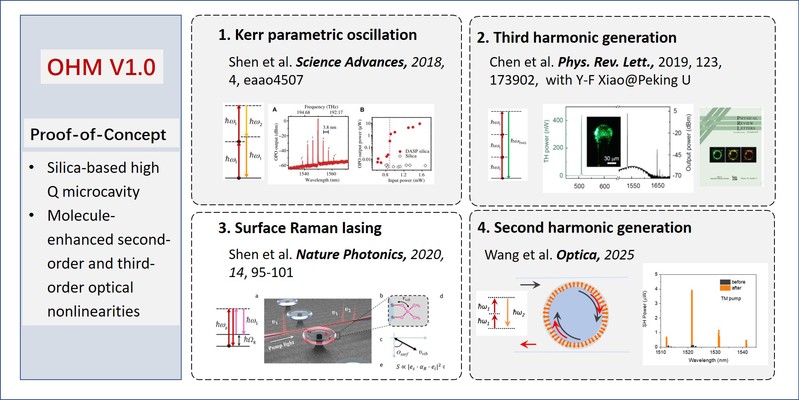
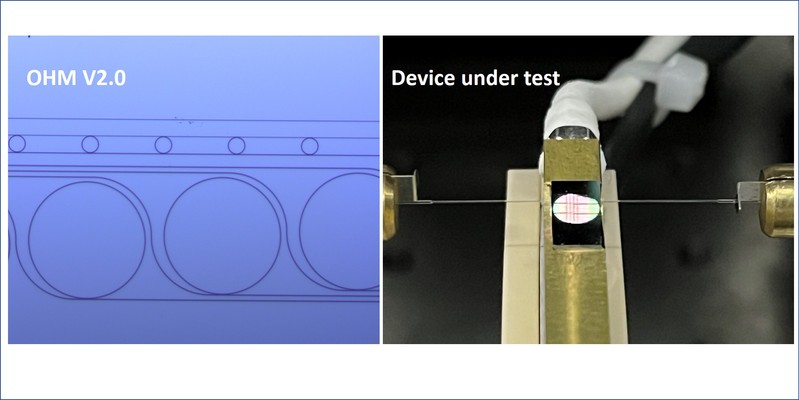
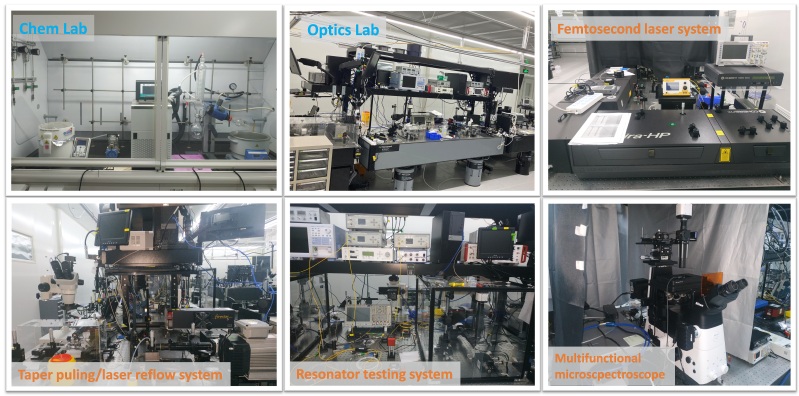
Related publication:
1. Molecule-induced surface second-order nonlinearity in an inversion symmetric microcavity. Optica 2025, 12, 769.
2. Raman laser from an optical microcavity grafted with a single molecule layer. Nature Photonics 2020, 14, 90.
3. Microcavity nonlinear optics with an organically functionalized surface. Phys. Rev. Lett. 2019, 123, 173902.
4. Low threshold parametric oscillation in organically modified microcavities. Science Advances 2018, 4(1), eaao4507
5. Hydrophobic silica microcavities with sustainable nonlinear photonic performance. ACS Appl. Mater. Interfaces 2023, 15, 41067.
6. Emerging material platforms for integrated microcavity photonics (Invited Review). Sci. China-Phys. Mech. Astron. 2022 65(10), 104201.
More is coming, stay tuned...
7. Broadband nonlinear optical microresonator array for topological second harmonic generation. Submitted. 2025 (arXiv:2506.21388)
8. Quasi-phase matching induced by XXXXXXXX microrings for second harmonic generation. To be Submitted. 2025
2. Micro/nano nonlinear photonics
In this sub-area, we are interested in exploring unconventional nanomaterials with exceptional nonlinear optical properties for next-generation integrated photonics. A key focus is on micro- and nanoscale structures composed of organic molecules or polymers, which offer tunable optical properties and compatibility with scalable fabrication.
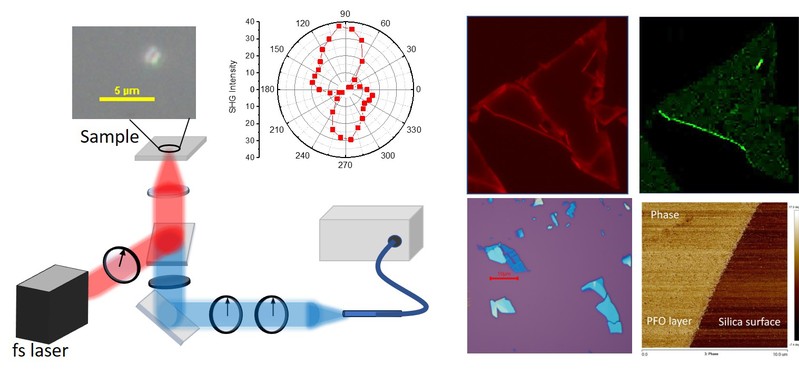
Related publication:
1. Large-domain monolayer MoS2 synthesis via local-feeding metalorganic chemical vapor deposition. ACS Materials Lett. 2024, 6, 2802. (Collaborative work. Contribution: performed nonlinear optical microscpectroscopic characterization)
2. Hydrogel platform capable of molecularly resolved pulling on Cells for mechanotransduction. Mater. Today Bio 2022, 17, 100476. (Collaborative work. Contribution: built custom-design microspectroscopic setup and conducted characterization)
Coming soon, stay tuned...
3. Exceptional XXXXXX in XXXXXX. Submitted. 2025.
3. Optical molecular biomaging probes
Developing novel molecular probes for imaging disease releted metabolic processes in cells.
Related publication: stay tuned....
1. A polarity-sensitive FLIM probe with high temporal resolution for visualizing intracellular lipid droplets and indentifying NAFLD. Submitted. 2025
Funding:
NSFC,0.50M, PI,2026.01-2029.12
NSFC,0.53M, PI,2023.01-2026.12
Shanghai Eastern Scholar Program, XX, PI,2021.01-2023.12
Shanghai Pujiang Talent Program,0.3M, PI,2020.11-2022.10
Shanghai Science and Technology Innovation Plan NSF,0.2M, PI,2020.07-2023.06
集成微腔非线性光学方向
2005年-2014年期间,先后跨学科(有机材料化学、非线性光谱学、生物医学光子学)从事有机/聚合物非线性光子材料合成、超快激光非线性光谱、双光子癌细胞成像与治疗的学习与研究。2015年起,跨学科(光物理/光电子信息)进入微腔光学领域,将有机材料学和非线性光谱学知识融合于微腔光学研究中,探索面向集成光芯片前沿应用的交叉学科研究方向。
开创新方向
以2018年1月发表于Science Advances 的研究工作为开端,开创了基于有机分子层和高品质因子微腔的'有机杂化微腔光子学'新方向。通过自主开发高品质单分子层集成技术,首次将表面非线性光学引入集成光学微腔研究,突破了氧化硅等传统硅光子材料本征非线性弱的核心瓶颈,首创建立高Q有机杂化微腔(OHMs)器件平台。
独立课题组后的系统性研究
基于OHMs v1.0 平台,围绕集成光学中的非线性频率转换机制与器件应用开展了系列原创性研究,系统性验证了OHM器件在集成非线性光学和光芯片领域的独特优势,代表性成果如下:
1. 硅基集成光子器件二阶非线性诱导新方案(Optica,2025)
突破点:提出了硅基光子器件二阶非线性诱导新原理和新技术,解决了集成光芯片中传统硅基光子材料二阶非线性缺失难题。
理论原理方面,创新性地将沈元壤先生在光谱学领域建立的'表面二阶非线性光学'理论融合入集成光学领域的'微腔耦合模'理论,提出“表面非线性-微腔耦合模”理论模型,阐明了极化分子层与模倏逝场(即延伸到微腔表面之外的光场)之间的强相互作用,确立了驱动二阶非线性效率突破性提升的关键机制。
实验技术方面,利用课题组前期发展的原创技术,在器件表面精准构筑了一层厚度仅1.2纳米的光学单分子层。通过精密设计的非对称分子排列,破除了材料对称性禁锢,赋予了器件本征二阶非线性,成功地在微腔器件中诱导产生了显著的二阶非线性光学响应。
该方案在集成光芯片应用领域具有两大显著潜在优势:完全兼容CMOS工艺和支持大面积规模化制备。
本工作在Light Conference 2025年度会议得到组委会认可获Best Poster Award(文章上线2周)。
上海科技大学为本工作的唯一完成单位。
2. 片上集成微腔高效拉曼激光原理与器件(Nature Photonics, 2020)
突破性成果:在微腔光学平台首次实验验证了1979年美国贝尔实验室在光谱学领域提出的表面受激拉曼散射(SSRS)理论,并基于OHM平台构建了SSRS辅助的高效片上集成拉曼激光器,将拉曼激光的转换效率提升至传统方案的8-10倍。
该工作被Nature杂志文章(Nature. Vol 602, 303. 2022)引用并重点评价为集成微腔研究在“计量学、通信、量子科学及其他领域的显著突破”。“notable breakthrough in metrology, telecommunications, quantum science, and many other areas[ref 39].”
本工作在USC和上海科技大学完成。实验部分在USC完成;PI贡献:提出研究创意方案,主导多方合作;制备OHM器件,完成测试与分析。理论部分在上海科技大学完成;PI贡献:建立基于OHM的SSRS理论的分析模型。
3. 分子增强微腔非线性谐频转换(Physical Review Letters,2019)
核心技术:开发分子层调控微腔三次谐频与和频的增强方法,实现了非线性光学过程效率的数量级提升,为高性能光频转换器件提供了理论和实验基础。
该工作被PRL期刊选为封面论文,并被选为Editor's Suggestion亮点报道。
本工作与北京大学肖云峰课题组合作完成。PI贡献:共同提出研究创意方案,制备提供OHM器件,参与测试分析。
4. 高Q氧化硅微腔光学频率梳稳定性优化(ACS Applied Materials & Interfaces,2023)
技术创新:提出基于有机钝化界面的频率梳长期稳定增强方案,解决了氧化硅微腔因环境敏感性导致的性能快速老化衰退问题,使得器件稳定性从原来的~40%@7天显著提升至~95%@290天。
该技术为微腔光频梳的低成本化、普及化研究与应用提供了重要的解决方案。
本工作上海科技大学为唯一完成单位。
5. 微腔平台升级:OHMs v2.0 器件(持续研究中)
进展:实现 OHM 器件与片上集成光子平台深度兼容,开发全片上集成化OHMs v2.0 器件。
系列成果,敬请持续关注......
(1) Broadband nonlinear optical microresonator array for topological second harmonic generation. Submitted. 2025 (arXiv:2506.21388)
(2) Quasi-phase matching induced by XXXXXXXX microrings for second harmonic generation. To be Submitted. 2025
微纳非线性光学方向
聚焦下一代可芯片集成的新型光子材料,开展探索性、原创性与颠覆性的前沿研究。
系列成果,敬请期待......
(1) Exceptional XXXXXX in XXXXXX. Submitted. 2025.
细胞成像光学探针
针对疾病相关代谢过程,开展细胞成像光学探针研究。
系列成果 敬请期待......
(1) A polarity-sensitive FLIM probe with high temporal resolution for visualizing intracellular lipid droplets Submitted. 2025
经费项目:
国家自然科学基金 面上项目, 负责人, 2026.01-2029.12
国家自然科学基金 面上项目, 负责人, 2023.01-2026.12
上海市特聘教授东方学者, 负责人, 2021.01-2023.12
上海市浦江人才计划项目, 负责人, 2020.11-2022.10
上海市科技创新行动计划 自然科学项目,负责人,2020.07-2023.06
25. J. Cheng#, S. Yu#, Y. Zhang, J. Lu*, X. Shen*, Quasi-phase matching induced by XXXXXXXX microrings for second harmonic generation. To be Submitted. 2025 (colaborated with Juanjuan Lu's Group, SIST)
24. S. Tang, D. Si, L. Wang*, X. Shen*, A polarity-sensitive FLIM probe with high temporal resolution for visualizing intracellular lipid droplets and indentifying NAFLD. Submitted. 2025
23. Y. Zhang, L. Wei, J. Cheng, Y. Ma, Y. Zhang, X. Shen*, Exceptional XXXXXX in XXXXXX. Submitted. 2025.
22. R. Wang, Y. Pan, X. Shen*, Broadband nonlinear optical microresonator array for topological second harmonic generation. Submitted. 2025 (arXiv:2506.21388)
21. X. Xu#, J. Li#, R. Wang#, R. Xiong, Y. Wang, X. Shen*, T. Wu*, Piezoelectric-metal phononic crystal enabling GHz tunable ultrahigh Q quasi-BIC mode. Advanced Science 2025, e13664 (arXiv:2506.16757)
20. X. Xu, et al, Z. Gao*, L. Li*, W. Zhao*, K. Wang*, X. Shen*, X. Wang*, W. Lai*, Y. Wu*, Y. Yan*, Organic micro-nanophotonics: materials, devices and integrated circuits (Invited Review). SCIENCE CHINA Physics. Mechanis & Astronomy 2025 IN PRESS
19.R. Wang, Y. Dai, J. Cheng, R. Wang, X. Shen*, Molecule-induced surface second-order nonlinearity in an inversion symmetric microcavity. Optica 2025, 12, 769. (arxiv:2405.12483)
两江科技评论: 超薄'分子铠甲'赋能硅基光子器件,非线性转换效率显著提升
ShanghaiTech News: Ultra-thin molecular layer boosts silicon photonics efficiency
18. Y. Yang, Y Qiu, B. Hua, J. Cai, Y. Zhang, K. Cao, X. Shen*, Q. Ji*, Large-domain monolayer MoS2 synthesis via local-feeding metalorganic chemical vapor deposition. ACS Materials Lett. 2024, 6, 2802.
17. S. Yu, H. Kang, X. Shen, Y. Xue, W. Wan, C. Zou, B. Chen, J. Lu, Poling-assisted hydrofluoric acid wet etching of thin-film lithium niobate. Opt. Lett. 2024, 49, 85
16. J. Xie#, Y. Wang#, H. Kang, J. Cheng, X. Shen*, Hydrophobic silica microcavities with sustainable nonlinear photonic performance. ACS Appl. Mater. Interfaces 2023, 15, 41067
Advances in Engineering: Enhancing long-term stability of ultrahigh Q silica microcavities
15. H. Wang, W. Xu, Q. Wei, S. Peng, Y. Shang, X. Jiang, D. Yu, K. Wang, R. Pu, C. Zhao, Z. Zang, H. Li, Y. Zhang, T. Pan, Z. Peng, X. Shen, S. Ling, W. Liu, F. Gao, Z. Ning, In-situ growth of low-dimensional perovskite-based insular nanocrystals for highly efficient light emitting diodes. Light: Science and Applications 2023, 12:62.
14. N. Cheng, Y. Zhang, Y. Wu, B. Li, H. Wang, S. Chen, P. Zhao, J. Cui, X. Shen, X. Zhu, Y. Zheng, Hydrogel platform capable of molecularly resolved pulling on Cells for mechanotransduction. Mater. Today Bio 2022, 17, 100476.
13. J Liu*, F. Bo*, L Chang*, C-H Dong*, X. Ou*, B. Regan*, X. Shen*, Q. Song*, B. Yao*, W. Zhang*, C-L Zou*, Y-F Xiao*, Emerging material platforms for integrated microcavity photonics (Invited Review). Sci. China-Phys. Mech. Astron. 2022 65(10), 104201 (Highly cited paper)
12.X. Shen*, H. Choi, D. Chen, W. Zhao, A. Armani*, Raman laser from an optical microcavity grafted with a single molecule layer. Nature Photonics 2020, 14, 90
11. J-h Chen#, X. Shen#, S-J Tang, Q-T Cao, Q. Gong, Y-F Xiao*, Microcavity nonlinear optics with an organically functionalized surface. Phys. Rev. Lett. 2019, 123, 173902 (Contribution: Jointly purposed the research idea, preapared OHM devices for optical testing, data analysis)
---Selected publications before joining ShanghaiTech---
10. X. Shen*, R. Beltran, V. Diep, S. Soltani, A. Armani*, Low threshold parametric oscillation in organically modified microcavities. Science Advances 2018, 4(1), eaao4507
9. L. Dou, Y. Zheng, X. Shen, G. Wu, K. Fields, W-C Hsu, H. Zhou, Y. Yang*, F. Wudl*, Single-crystal linear polymers through visible light-triggered topochemical quantitative polymerization. Science 2014, 343, 272
8. X. Shen, Y. Zheng, F. Wudl*, Thermally induced reversible solide-state transformation of novel s-indancene 1,3,5,7-tetraone derivatives. J. Mater. Chem. C 2016, 4 2427
7. X. Shen, L. Li, A. Chan, S. Q. Yao, Q-H Xu*, Water soluble conjugated polymers for simultaneous two-photon cell imaging and two-photon photodynamic therapy. Adv. Opt. Mater. 2013, 1, 92
6. X. Shen, S. Li, L. Li, S. Q. Yao, Q-H Xu*, Highly efficient conjugated polymer nano-photosensitizers for targeted two-photon photodynamic therapy and imaging. Chem. Eur. J. 2015, 21, 2214
5. X. Shen, L. Li, H. Wu, S. Q. Yao, Q-H Xu*, Photosensitizer-doped conjugated polymer nanoparticles for simultaneous two-photon imaging and two-photon photodynamic therapy in living cells. Nanoscale 2011, 3, 5140
Top 20 Articles in the domain 'two-photon, imaging, sensing, therapy' by DoMedLib, 2012
4. X. Shen, L. Li, H. Wu, S. Q. Yao, Q-H Xu*, Enhanced two-photon single oxygen generation by photosensitizer-doped conjugated polymer nanoparticles. Langmuir 2011, 11, 19551
Top 20 Articles in the domain 'two-photon, imaging, sensing, therapy' by DoMedLib, 2012
3. L. Li, X. Shen, Q-H Xu, S. Q. Yao*, A switchable two-photon membrane tracer capable of imaging membranceassociated protein tyrosine phosphatase activities. Angew. Chem. Int. Ed. 2012, 51, 1
2. R. Shen, X. Shen, Z. Zhang, Y. Li, S. Liu, H. Liu*, Multi-functional conjugates to prepare nucleolar-targeting CdS quantum dots. J. Am. Chem. Soc. 2010, 132, 8627 (Contribution: conceived the original research idea, designed and synthesized the Y-shap molecules and the quantum dots, performed the optical characterization)
1. X. Shen, H. Liu*, Y. Li, S. Liu, Click-together azobezene dendrons: synthesis and characterization. Macromolecules 2008, 41, 2421
Hightlighed in Noteworthy Chemistry ACS, May 2008 by Ben Zhong Tang
Jun 12, 2025 - Our paper in Optica was recognized by the committee of the international Light Conference 2025 (just two weeks after it went online) and won the Best Poster Award.
May 25, 2025 - Yile is invited to attend the Extreme Optics Summer School ('极端光学'全国研究生暑期学校) in Dalian (大连) organized by Peking University and Shanxi University in Aug 2025 and will give a poster talk.
May 15, 2025 - Congrat Ru Wang and Yue Dai! With five years' hard work and in-depth research, our paper on molecule-induced second order nonlinearity for integrated photonics is accepted by Optica.
Jul 17-18, 2024 - Jinsong and Ruoyu were invited to Peking University to attend the Postgraduate Student's Workshop on Microcavity Nonlinear Optics (微腔非线性光学博士生学术论坛) and gave a presentation on their research progress.
Jun 15-18, 2024 - Sixue went to Guangzhou to attend the 34th Chinese Chemical Society Congress (中国化学会年会).
Mar 2024 - Ru Wang, Hui Kang, Tianhao went to Liyang (溧阳) to attend the 第一届应用物理会议 and gave a poster.
Aug 30, 2023 - Congrat Jiadu, Yang Wang on their paper! Our new paper is online on ACS Applied Materials and Interfaces. We developed a new type of ultrahigh Q silica microcavity device that effectively prevents Q decay over time, enabling long-term stable nonlinear optical performance.
Jul 2023 - Xiaoqin gave an oral presentation in PIERS 2023 in Prague, Czech.
Mar 2023 - Ru Wang, Hui Kang, Jinsong went to Xian (西安) to attend Microcavity Photonics Symposium.
Sept 2022 - Xiaoqin gave an invited webinar talk organized by 电子器件关键材料与技术专委会论坛.
May 2021 - Xiaoqin gave a talk on 第一届光学前沿高峰论坛暨2020年度中国光学十大进展颁奖典礼 at Hangzhou.
Jun 2021 - Xiaoqin gave a talk on LTO 2021, Shanghai.
Jan 2020 - Our research work was published on Nature Photonics! Congrats to all the coworkers! We managed to realize the excitation of an exceptional nonlinear process, named Surface Stimulated Raman Scattering (SSRS), from a single-molecule layer grafted on a on-chip microcavity.
Nov 29, 2019 - Xiaoqin gave an invited talk at Institute of Chemistry, CAS, Beijing (中科院化学所).
Nov 14, 2019 - Xiaoqin gave an oral presentation in The 12th International Photonics and OptoElectronics Meeting (POEM 2019), Wuhan, Hubei.
Nov 13, 2019 - Xiaoqin gave an invited talk at Wuhan National Laboratory for Optoelectronic (武汉光电国家研究中心).
Oct 25, 2019 - Our paper published on Physical Review Letters was featured on cover (封面报道) and highlighted as editor's suggestion.
Oct 20, 2019 - Xiaoqin gave an invited talk at the Microcavity Workshop, Photonics Asia 2019 (亚洲光电子会议), Hangzhou, Zhejiang.
Oct 1, 2019 - Our recent work collaborated with Yunfeng Xiao's group at PKU was just accepted by Physical Review Letters, titled 'Microcavity nonlinear optics with an organically functionalized surface'.
Jun 2, 2019 - Xiaoqin gave an invited talk on 2019 Microcavity Photonics Symposium, Nankai University, Tianjin.
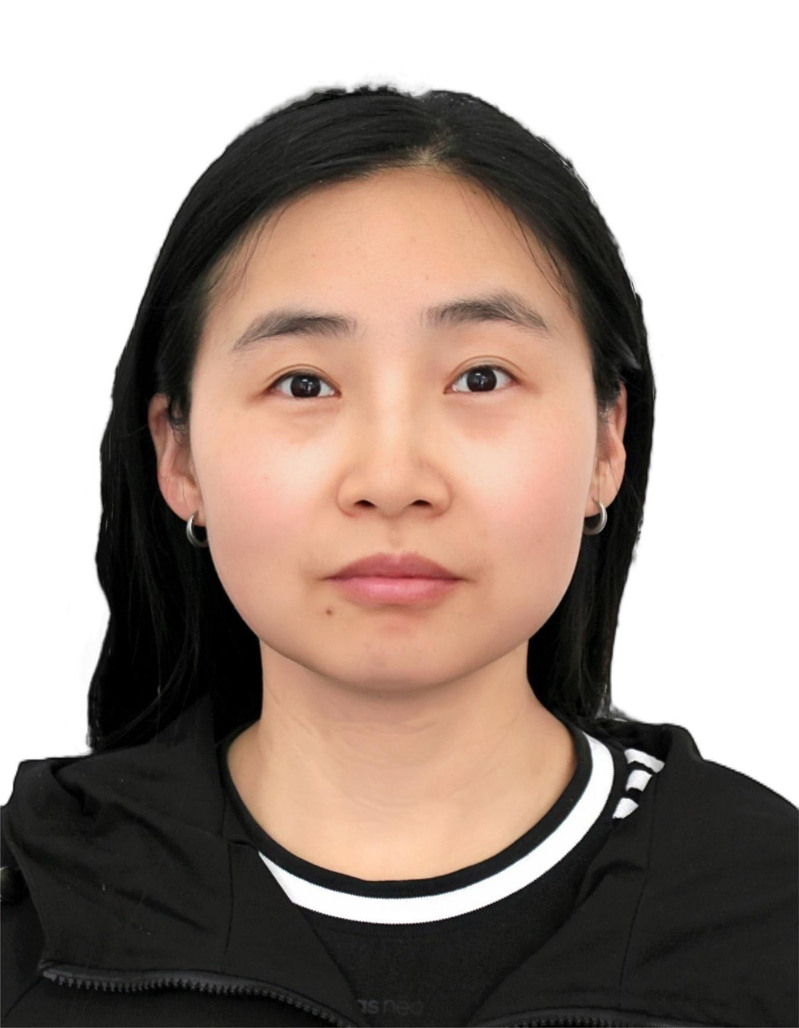
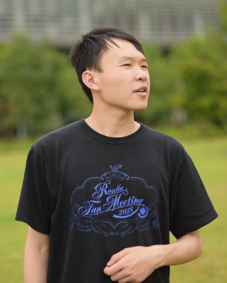
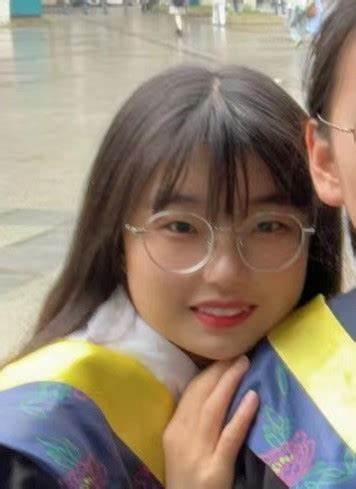
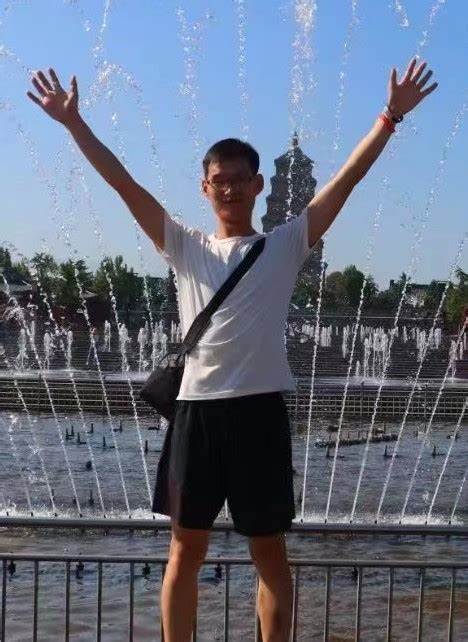
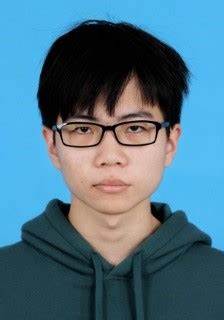
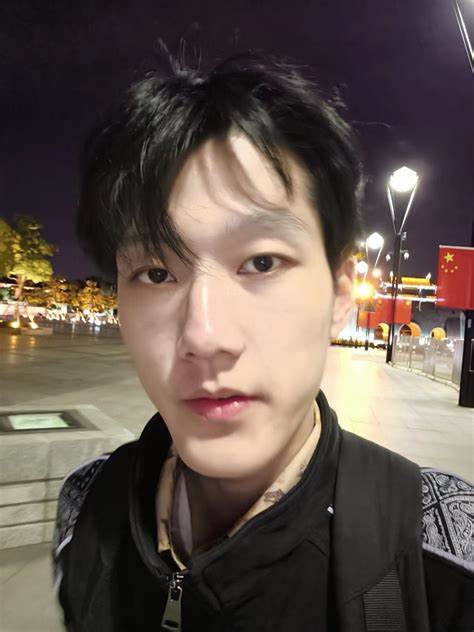
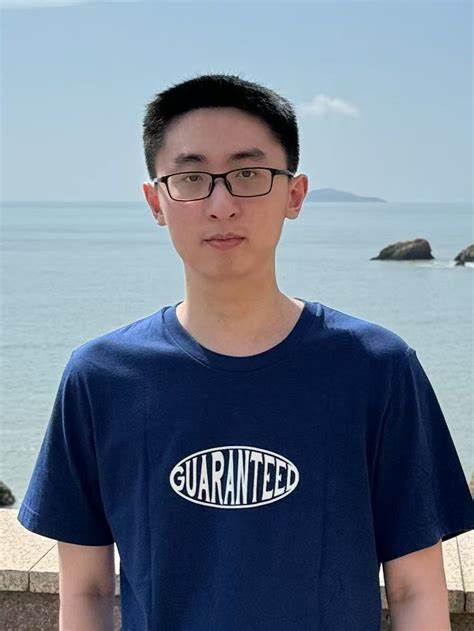

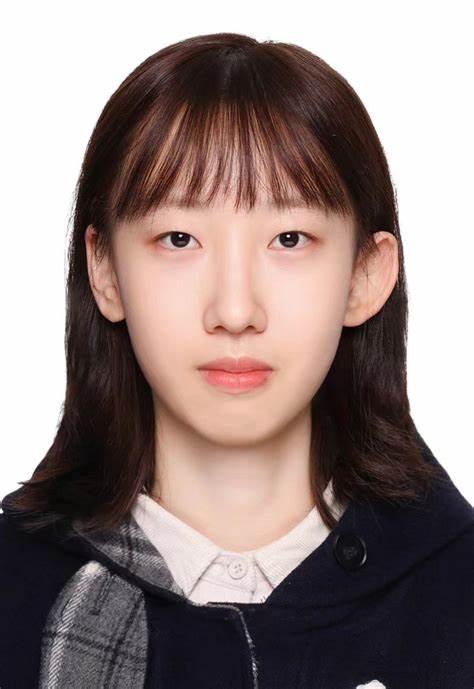
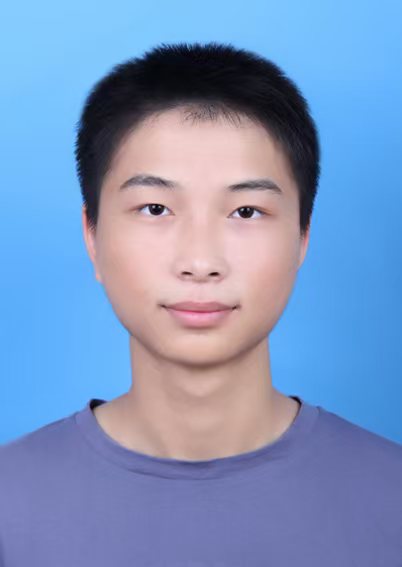
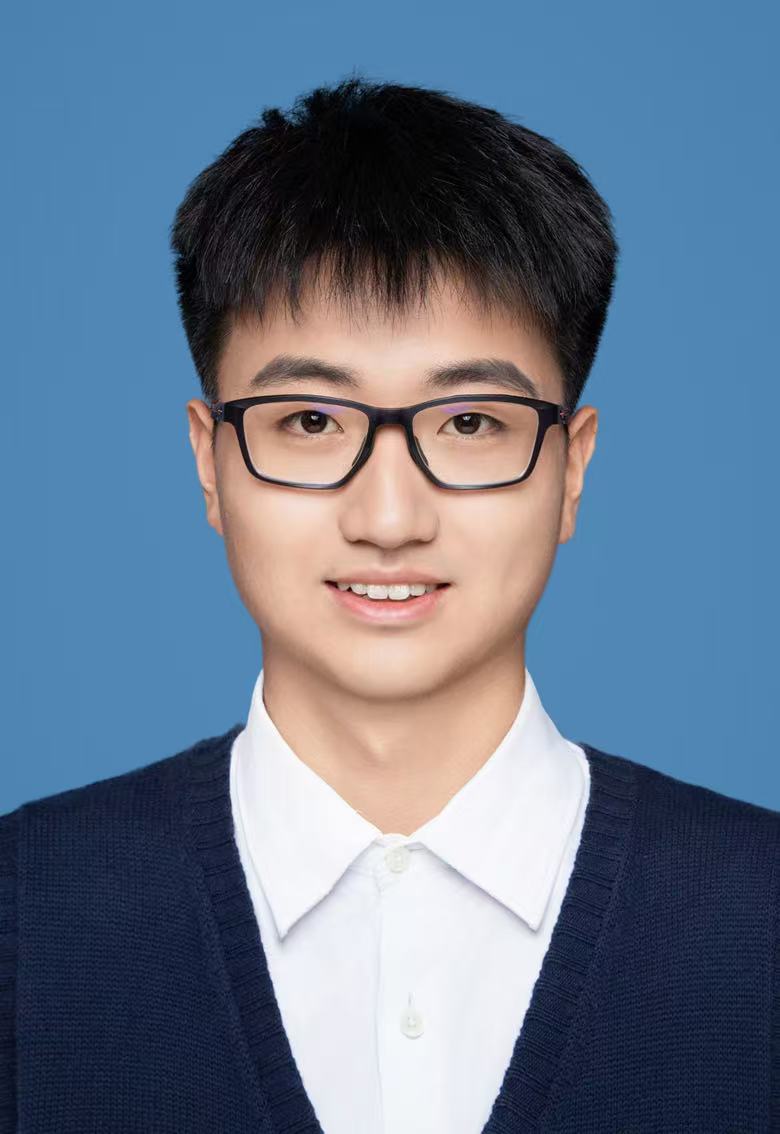

Group Photos
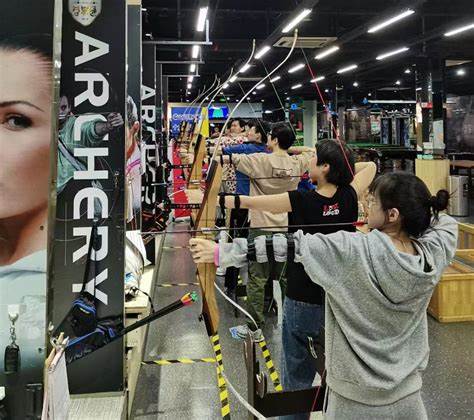
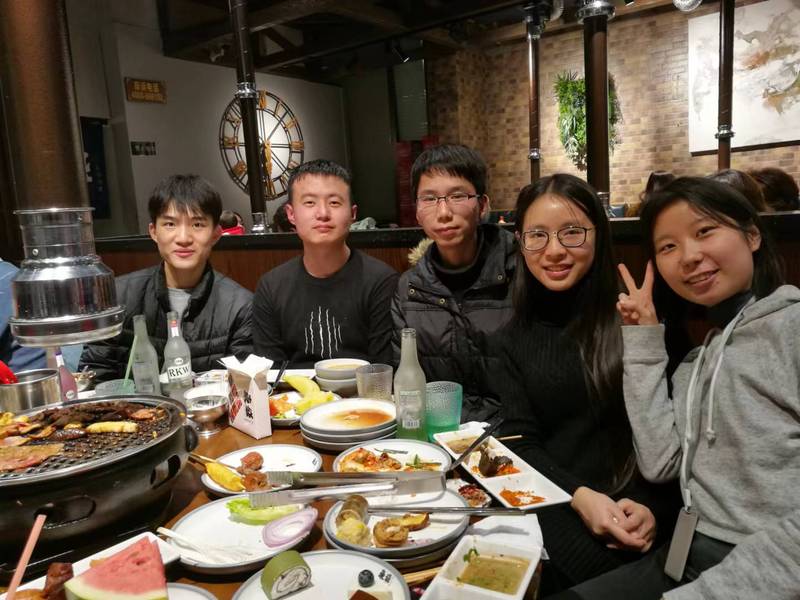
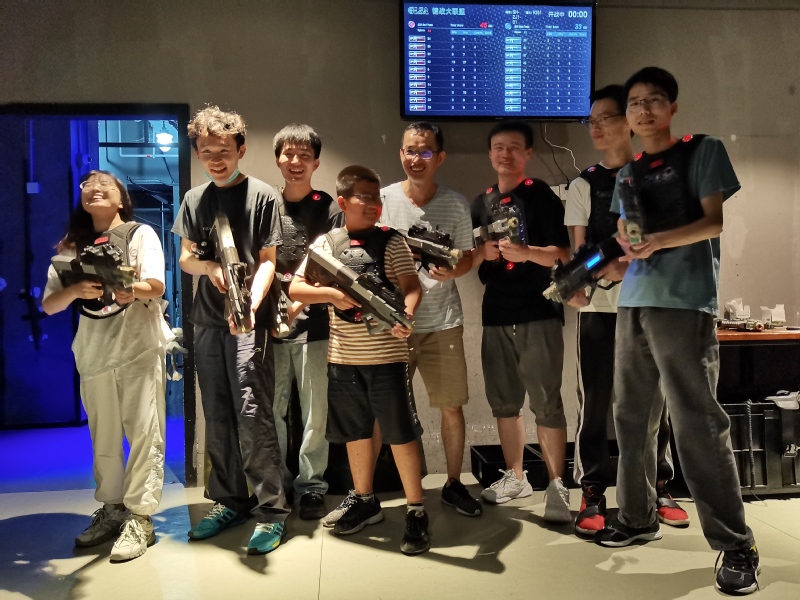
康辉 Hui Kang (Master 2024) Current: HISTARLINK 氦星光联科技
王茹 Ru Wang (Master 2024) Current: 梅陇实验中学
谢家督 Jiadu Xie (Master 2023) Current: IC design engineer, AIchip 世芯电子
戴阅 Yue Dai (Master 2023) Current: IC design 芯片设计
汪洋 Yang Wang (Master 2022) Current: product engineer, Galaxycore 格科微电子
吕浏尘 Liucheng Lv (Undergrad 2022) Next: graduate student, ShanghahiTech
丁聪杰 Congjie Ding (Undergrad 2020) Next: graduate student, ShanghahiTech
张毅乐 Yile Zhang (Undergrad 2020) Next: graduate student, ShanghahiTech
秦雨琪 Yuqi Qin (Undergrad 2020) Next: graduate student, Hongkong University of Science and Technology
秦昊烨 Haoye Qin (Visting student 2020, Beihang University) Next: graduate student, Europe
1. PHYS1193: General Physics II--Electromagnetisms and Optics (3 credits), Fall
2. MSE2502: Fluorescence Spectroscopy and Microscopy (3 credits), Fall
3. Phys1501: Introduction to Modern Physics (Photonics part) (1 credit). Summer
物质学院沈晓钦组开发超薄“分子铠甲”赋能硅光子, 显著提升器件二阶非线性
王茹等发表在OPTICA的工作获Light Conference 2025会议Best Poster Award
Light会客厅 | 第九期:Light与上科大“携手共赴下一个十年”
物质学院沈晓钦课题组与合作者在有机修饰微腔光学研究取得重要进展
bilibili webinar| 20200903上海科技大学沈晓钦-有机杂化超高品质因子光学微腔



